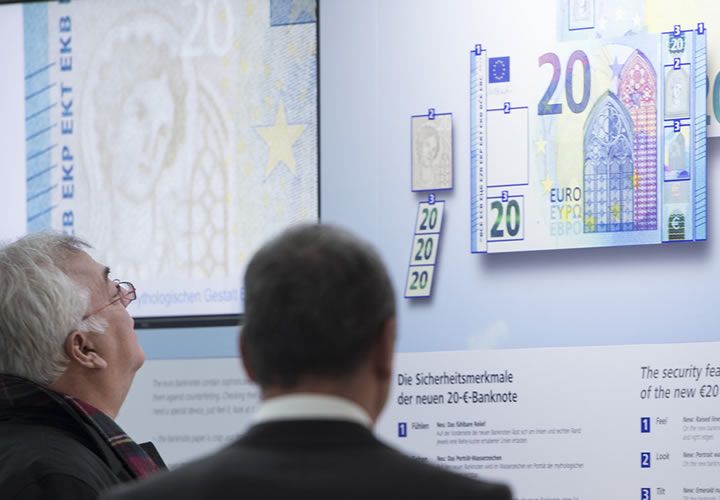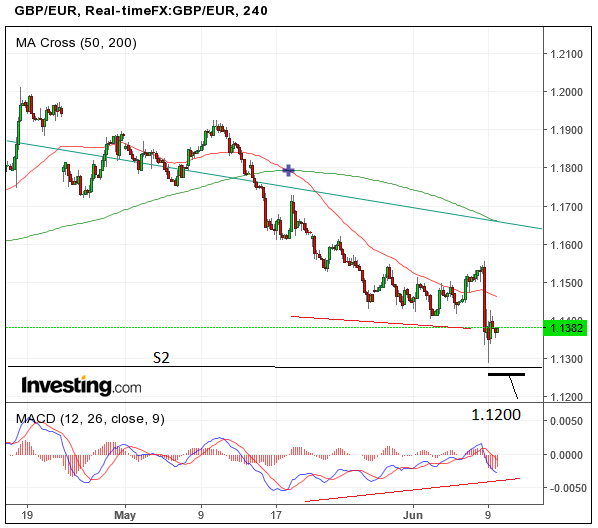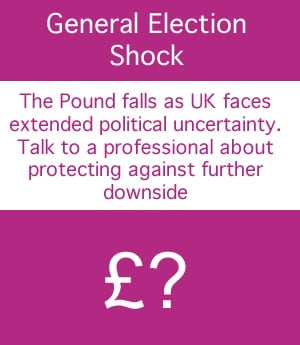The GBP/EUR Rate Week-Ahead Technical Forecast Hints at Further Weakness

- Quotes:
- Pound to Euro exchange rate: 1 GBP = 1.1306, 0.65% lower than day's open EUR
- Euro to Pound Sterling exchange rate: 1 EUR = 0.8786 GBP
Pound Sterling starts the new week off sharply lower in line with our forecasts made ahead of the market open.
Politics should remain the main focus for traders this week and Sterling has embarked on a fresh tumble on news that major ratings agencies have taken a dim view of the UK outlook owing to recent political instability.
Concerning the GBP/EUR outlook, we hold a view that the near-term for Pound Sterling remains negative based on our latest technical analysis of the pair.
Technical analysis aims to remove the noise created by the fundamental drivers of a currency - politics, economics etc. - and attempts to make a forward-looking call based on the underlying structure of the market.
We note the Pound to Euro exchange rate (GBP/EUR) is in a short-term downtrend on the four-hour chart, which has the potential to extend lower.

The downtrend steepened after the UK general elections returned a Conservative minority parliament but the pair has sicne consolidated at the 1.1300 level.
Analyst Bill McNamara at Charles Stanley has also taken a look at Sterling-Euro at the start of the week and notes that the Pound has now posted a sixth consecutive weekly loss relative to the single currency which leaves it looking relatively oversold.
Its 14-day RSI has slumped to a reading of 34% signifying such conditions. But McNamara warns it is still not at all clear that the bottom is in. "The next downside target is now around €1.124," says the analyst.
We continue to see the potential for more downside in the week to come, with the proviso that much depends on the changing outlook for Brexit talks.
There are some analysts, like those at investment bank TD Securities, who actually see the Pound potentially bouncing on expectations of a softer Brexit.
In a recent note, entitled, “GBP: Are we walking into a Bear Trap,” they outline the risks to a overly bearish GBP stance.
“GBP is weaker after the UK election, but it has actually outperformed our expectations. For now, we remain focussed on downside risks for GBP, but see a high degree of uncertainty around that outlook,” they said, adding:
“The UK’s fundamentals and murky political outlook imply a weaker currency, but upcoming Brexit negotiations are key. A “softer” Brexit is now back on the table, which could help put a floor under downside risks.”
From a technical perspective, there is also a floor under the Pound in the form of the S2 monthly pivot situated at 1.1282, just below the 1.1300 lows, and this will act as an obstacle preventing more downside.
Monthly pivots are levels closely watched by serious traders who often trade the exchange rate when it touches them, normally the counter-trend bounce as more buyers enter the market in expectation of higher prices.
According to the definition on binary options trading site, BinaryTribune, pivots are used in the following ways:
"Although different types of traders use a variety of pivot points periods (day, swing and position traders), an overlap between them renders a certain price level much more sturdy and hard to be broken. Thus, if a daily pivot point coincides with a weekly one, it will stand a higher chance of successfully pushing the price back in its original direction upon contact."
Other features supporting the possibility of a recovery is the way the MACD momentum indicator looks, which is shown in the lower pane of the chart below.
Note how the indicator has been rising since the 17th May, whilst at the same time, the exchange rate has been falling: this is what is called a convergence and is a bullish signal.
Although the pair bucked the bullish signal from this convergence following the election, the MACD still remains above the low of the 17th even after that strong sell-off.
Data to Watch for the Pound
Pound Sterling Live will be covering the political landscape and its impact on Sterling.
We see the prospect of a stronger Pound should the election outcome point to a softer-Brexit.
"The UK election outcome raises a potential for an alternative to the hard Brexit which was what PM May was seemingly pushing for," says Viraj Patel at ING Bank N.V. "The loss of the Conservative seats has exposed vulnerability to the strategy PM May was pursuing and leaves her very vulnerable within her party. She now needs to accept a broader range of views within the party to secure a leadership."
In terms of hard Brexit, which GBP crosses seems to be pricing in, it would be difficult to push it through the UK Parliament given the very fragile (potential) Conservative-DUP collation.
"Hence, we see more room for re-pricing," says Patel.
ING are now actually willing to bet on a rise in the value of the Pound and "prefer to go long GBP against USD given our constructive EUR/USD view."
But, keep one eye on data for surprises.
A busy week for the Pound kicks off with May Inflation data at 09.30 BST on Tuesday, which is expected to show a slower 0.2% rise compared to the 0.5% rise in April.
Employment data is out at 9.30 on Wednesday, June 14, and although the Unemployment Rate is forecast to remain at a very low 4.6%, it is the Average Earnings Statistic which will be the centre of attention given economists concerns about falling real earnings impacting on consumer spending.
The May Retail Sales release is out on Thursday Morning a 9.30, and is forecast to show a dramatic slow-down, and even a -0.8% contraction compared to the previous month rise of 2.3%.
The Bank of England (BOE) rate meeting is on Thursday at 12.00 but no change in policy or voting is expected, and arch-hawk Forbes will not be present.
Data to Watch for the Euro
The Euro may not trade particularly strongly this week so analysts will look to its counterparts for cues on direction.
The main release will be the ZEW survey of businesses which is regarded as a fairly accurate forward indicator of the economy; it is released at 10.00 BST on Tuesday, June 13.
Industrial Production and the Trade Balance are also out in the week ahead.
Last week’s European Central Bank (ECB) rate meeting was almost exactly as analysts had expected it – a nod to growth discounted by continued concerns over inflation.
This means the focus going ahead will be on data which informs the outlook for inflation.





